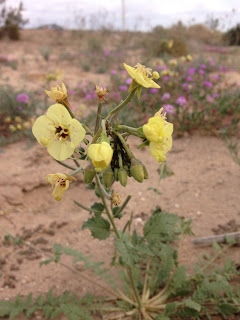Astragalus Fabaceae The common names locoweed, rattleweed, and milkvetch all apply to members of the diverse genus Astragalus, with more than 2,000 species worldwide. With 94 species in California and 34 in our desert regions, it is one of the most species-rich genera in California. Although a few species of Astragalus are distinctive, most are difficult to identify without examining both flowers and fruits. Our flora includes both annual and perennial species, with most sharing a mat-like growth form and small pinnate leaflets. There are exceptions, however, with tall, relatively upright species. A characteristic feature of many species, and he source of the name rattleweed, comes from the inflated seed pods. When mature, pods rattle hen blown by the wind. The name locoweed comes from the toxic accumulation of selenium in many species that poison cattle and cause them to behave strangely when eaten. "California Native Plants, Philip W Rundel, Robert J Gustafson, Michael E Kauf...




















